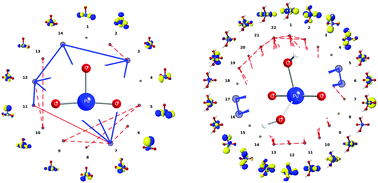On the multi-reference nature of plutonium oxides: PuO22+, PuO2, PuO3 and PuO2(OH)2†
Abstract
Actinide-containing complexes present formidable challenges for electronic structure methods due to the large number of degenerate or quasi-degenerate electronic states arising from partially occupied 5f and 6d shells. Conventional multi-reference methods can treat active spaces that are often at the upper limit of what is required for a proper treatment of species with complex electronic structures, leaving no room for verifying their suitability. In this work we address the issue of properly defining the active spaces in such calculations, and introduce a protocol to determine optimal active spaces based on the use of the Density Matrix Renormalization Group algorithm and concepts of quantum information theory. We apply the protocol to elucidate the electronic structure and bonding mechanism of volatile plutonium oxides (PuO3 and PuO2(OH)2), species associated with nuclear safety issues for which little is known about the electronic structure and energetics. We show how, within a scalar relativistic framework, orbital-pair correlations can be used to guide the definition of optimal active spaces which provide an accurate description of static/non-dynamic electron correlation, as well as to analyse the chemical bonding beyond a simple orbital model. From this bonding analysis we are able to show that the addition of oxo- or hydroxo-groups to the plutonium dioxide species considerably changes the π-bonding mechanism with respect to the bare triatomics, resulting in bent structures with a considerable multi-reference character.



 Please wait while we load your content...
Please wait while we load your content...